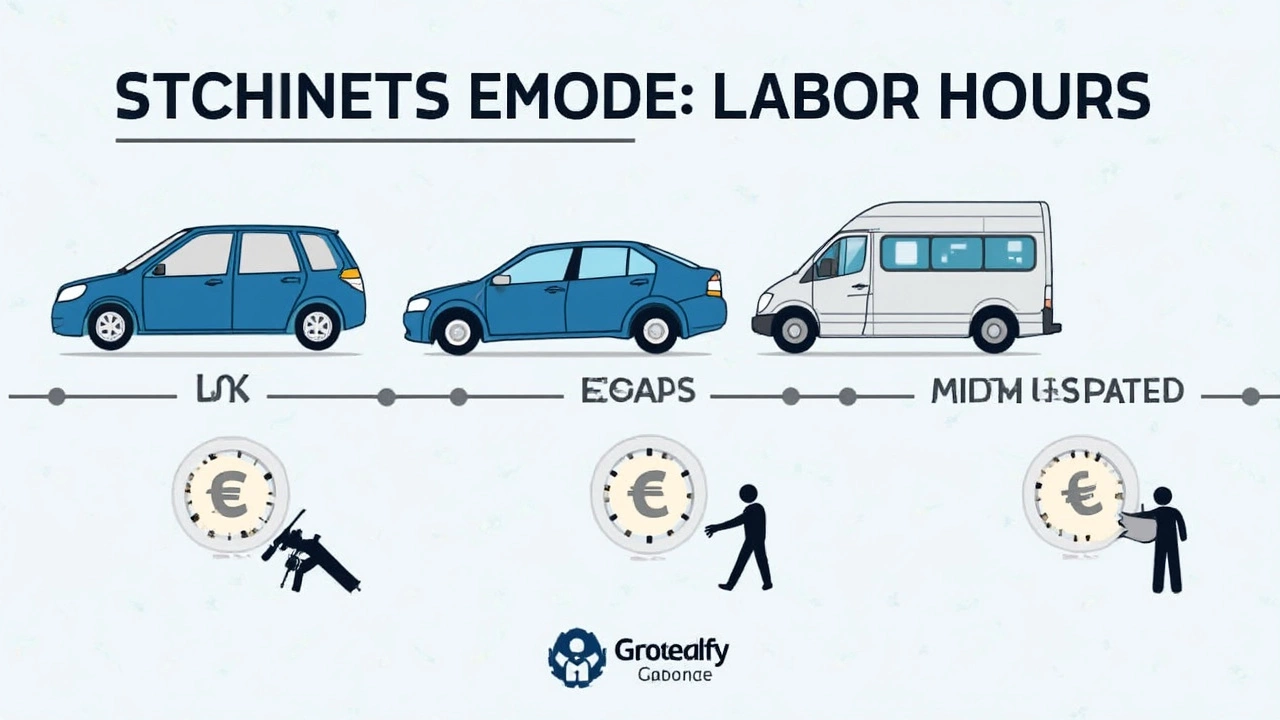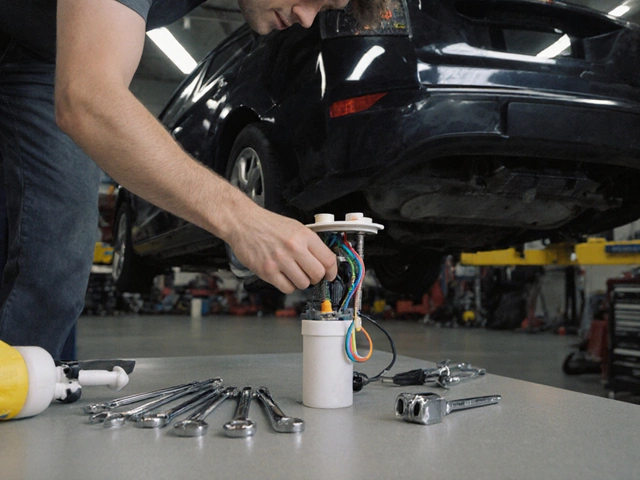If you’re staring at a shaky clutch pedal or hearing grinding noises every time you shift, the question pops up fast: How much time does it actually take to swap out a clutch? It’s not a one-size-fits-all answer. Even two cars that look similar can have wildly different labor times.
On the low end, a simple front-wheel-drive car might need just 3 to 5 hours in the shop. But if you’re driving a pickup or an all-wheel-drive SUV, don’t be shocked if the job creeps up to 8 or 9 hours—sometimes even more. The main headaches? Some cars need their engines or whole subframes dropped, and tiny changes in engine layout can double the work.
Before you schedule the job, grab your car’s make, model, and year. Call a few shops. Ask for labor hours and double-check if they’re looking at flat-rate book times or just guessing. Shop around—even if the book says six hours, some mechanics are just plain faster, and some will include extras like swapping the flywheel or alignment checks in their time estimates.
- What Affects Clutch Replacement Time?
- Average Labor Hours by Vehicle Type
- Shop Labor Rates and Saving Tips
- Can You Do It Yourself?
What Affects Clutch Replacement Time?
There’s no magic number for how long it’ll take to replace a clutch. A lot of stuff can speed things up or drag them out. Understanding what’s behind those labor hours can save you cash—and help you avoid getting overcharged at the shop.
The biggest factor is your car’s design. Engine layout, drivetrain type, and how tight stuff is packed under the hood make a difference. Here’s a breakdown of what matters most:
- Clutch replacement is way quicker on front-wheel-drive cars. You usually just need to drop the transaxle, and that’s it.
- All-wheel-drive setups eat up more time. Shops often have to remove drive shafts, exhaust parts, and sometimes even the whole subframe.
- Older cars (especially classics) sometimes take longer since rusty bolts and old hardware can slow things down or break, leading to extra work.
- Big trucks or vehicles with heavy-duty parts are just tougher to tear down and put back together—they’re designed for heavy loads, so bolts are bigger and tighter.
- Some cars just have weird layouts. For example, a transverse engine (mounted sideways) often takes less time than a longitudinal engine (in line with the car), especially in two-wheel-drive vehicles.
Shop experience matters too. A seasoned mechanic who’s done dozens of your exact model will almost always be quicker and sometimes spots problems early, saving even more time.
There are also some wildcards:
- Aftermarket modifications—especially custom exhausts, oversized tires, or engine swaps—can add unexpected hours. Mechanics may need custom solutions just to get parts out of the way.
- Extra repairs, like a leaky rear main seal or a worn flywheel, can add time if they’re spotted during the job. Always ask if inspection and replacement of related parts are already built into the estimate.
Check out this quick table to see how these factors stack up for different types of vehicles:
| Vehicle Type | Typical Labor Hours | Main Time Factors |
|---|---|---|
| Front-Wheel Drive Coupe | 3–5 | Easy transaxle access, fewer components |
| Rear-Wheel Drive Sedan | 4–6 | Driveshaft removal, heavier transmission |
| All-Wheel Drive Crossover | 6–9 | Extra drive shafts, subframe removal |
| Large Pickup Truck | 7–10 | Bulky parts, larger hardware, undercarriage work |
If you’re getting quotes, always ask the shop exactly what’s included. Some give you a low number that only covers the basics, but the price will jump if they hit any snags or find extra wear. Knowing these details upfront saves you a headache later.
Average Labor Hours by Vehicle Type
The time it takes to replace a clutch is all over the map based on what you drive. Shops usually go by OE or aftermarket labor book times, but real-world jobs can go faster or drag on, depending on rust, past repairs, or stuck bolts.
The clutch replacement process is a lot slicker for small, front-wheel-drive cars. For example, swapping the clutch on a basic Honda Civic from the early 2000s? Most techs can wrap that in 3 to 5 hours if nothing’s seized up. Manual-transmission Toyota Corollas or Mazda 3s usually fall in the same zone. That’s about a half-day’s labor charge right there.
Step up to a rear-wheel-drive pickup or a midsize SUV, like a Ford F-150 or Chevy Silverado, and you’re staring at 6 to 8 hours—sometimes longer if you’ve got a transfer case to wrangle. Sports cars, especially from Europe, are the real troublemakers. Just ask someone with a BMW 3 Series or Audi A4: 8 to 10 hours isn’t rare. Engine crammed tight, odd subframe layouts, and just getting to the transmission can eat up half the day.
Here’s a quick look at average book labor times for some common rides:
| Vehicle Type | Example Models | Labor Hours (Range) |
|---|---|---|
| Front-Wheel Drive Compact | Honda Civic, Mazda 3, Toyota Corolla | 3–5 |
| Rear-Wheel Drive Truck/SUV | Ford F-150, Chevy Silverado | 6–8 |
| All-Wheel Drive SUV | Subaru Outback, Toyota RAV4 AWD | 7–10 |
| European Sports Sedan | BMW 3 Series, Audi A4 | 8–10 |
| Older Cars (Classic/Restomod) | '68 Mustang, Datsun 240Z | 5–7 (if parts aren’t frozen) |
If you rock a 4WD or AWD and the job looks high, don’t be surprised. Those drivelines add a lot. For older cars, sometimes it’s hard to predict—rust can turn any job into a marathon. Always ask your shop for their specific estimate, and check if their hours match what you see on the estimate—they should be transparent if something’s driving the number up.

Shop Labor Rates and Saving Tips
Labor rates for clutch replacement can feel all over the map depending on where you live and what kind of shop you choose. Nationally in the US, most independent shops charge between $90 and $150 per hour for labor. If you go to a dealer, it’s not weird to see rates up at $180 or more. And that’s just the hourly charge—actual clutch jobs almost always run several hours, so the total adds up quick.
| Shop Type | Average Labor Rate (per hour) |
|---|---|
| Independent Garage | $90–$150 |
| National Chain (e.g. Midas, Pep Boys) | $100–$170 |
| Dealership | $140–$200 |
The number of labor hours usually depends on the car’s setup but, as a ballpark, you’re looking at 4 to 9 hours. Multiply that by the labor rate, and you can see how fast that clutch replacement bill grows.
Want a real-world take? Here’s how a pro describes it:
“Most front-wheel drive cars take us about five hours. If it’s a 4WD truck, it’s closer to nine. The faster you get at it, the more you’re saving the customer—but some jobs just can’t be rushed.” — Sara Morrison, ASE Certified Technician
So, how can you avoid paying more than you should? Start with these tips:
- Always get a written estimate, and ask that labor hours are spelled out—don’t just accept a lump-sum quote.
- Ask if the shop uses the manufacturer’s flat-rate guide, which keeps things fair and stops them from charging for extra hours.
- Some shops offer discounts if you provide your own clutch replacement kit. Just make sure the parts are high quality—cheap kits cause more problems than they fix.
- If your car needs any extra work while the clutch is out (rear main seal, throwout bearing, or slave cylinder), do it now. The labor overlaps with the clutch job, so it’s way cheaper than coming back later.
- Shop around—don’t be shy about a little friendly negotiation if you’ve got comparable quotes.
One overlooked hack is to check for shop promotions or coupons online. Some national chains post service deals on their websites or emails, especially during slower seasons.
Can You Do It Yourself?
Tackling a clutch replacement at home is the car DIY mountain—steep, but not impossible if you’ve got the skills and guts. First, it’s more than just unbolting a few pieces. You're usually dropping the transmission, which can be super heavy and awkward. Trust me, even a small car’s gearbox feels ridiculous the second you’re under it with greasy hands.
What really matters? Tools and space. Almost every clutch job demands a decent jack, sturdy jack stands, and at least a basic torque wrench. For many modern cars, you’ll also want a transmission jack and alignment tool. Even then, sometimes specialty sockets or pry bars are necessary.
- Expect it to take at least double the shop estimate if you’re a regular home mechanic. If a pro needs 6 hours, block out 12–16 hours for your first try.
- You need clear access underneath your vehicle. A flat concrete driveway is fine, but avoid grass or slopes.
- Be ready for rusted bolts and unexpected stuck parts—especially working on older rides. Soak everything in penetrating oil ahead of time.
The clutch replacement on newer cars with tight engine bays or on 4WD trucks can be especially rough. Think lifting the engine or disconnecting big, heavy parts.
A few more reality checks:
| Car Type | Average DIY Hours | Extra Headaches |
|---|---|---|
| Front-wheel drive subcompact | 10–12 | Very tight spaces |
| Rear-wheel drive sedan | 8–10 | Heavier transmission |
| 4WD SUV/Pickup | 15–20+ | Transfer case, big driveshafts |
Want to save money but not risk being stuck with your car on jack stands for a week? Some folks swap the clutch with a gearhead friend—the extra hands make a massive difference, especially when handling the transmission. Watching a few model-specific YouTube videos first is a game changer.
If you screw it up, worst case you’ll have to tow it to a shop anyway. Double-check the steps. And remember, sometimes just paying for experienced labor is less stressful than 12 hours of wrestling under your car.




